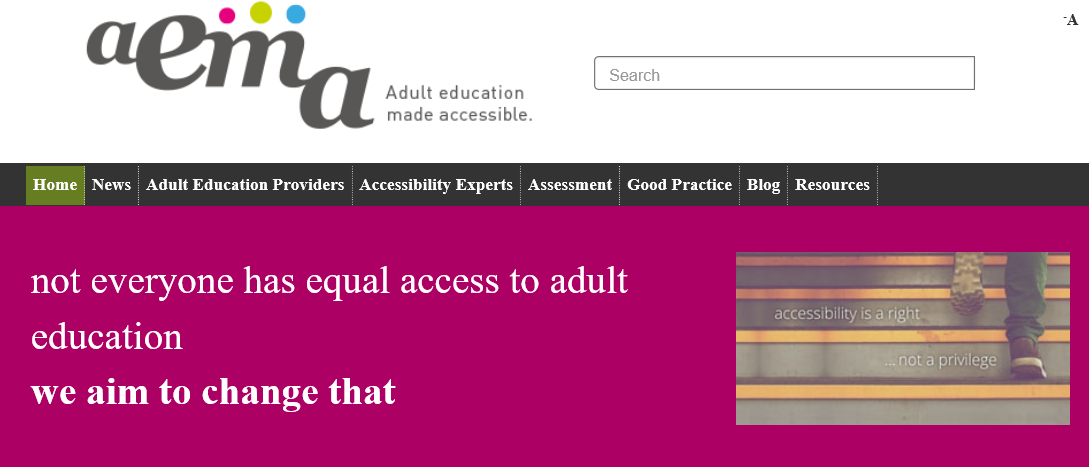How accessible are adult learning centres? What criteria can we define to measure the accessibility of adult learning centres? How can the accessibility of adult learning centres be improved?
AEMA has created a tool that should allow any adult learning centre to benchmark their accessibility against a series of criteria developed in collaboration with accessibility experts.
The adult learning centres that will use the Matrix for self-review will receive an Open Badge recognising their commitment to accessibility (regardless of their actual accessibility score). Other badges will be delivered after external review of the self-assessment and yet another after demonstration of effective improvement over a period of time to an external reviewer.
The five levels of accessibility
Each criterion is defined for each of the five levels of maturity:
- Aware – members of the Adult Learning Centre (ALC) staff are aware that the issue of accessibility of disabled adult students should be addressed.
- Exploring – something tangible has started within the ALC regarding accessibility. It could be the nomination of someone in charge of studying the issue, a teacher introducing an assistive device, disseminating knowledge on rules and regulations relative to accessibility, etc.
- Developing – the organisation is fully committed to making accessibility the organisational norm. Initiatives are encouraged and celebrated, accessibility policies are drafted and implemented.
- Integrated – accessibility of adult learners with disabilities is at the heart of the ALC’s practice and policy. Practices and policies are regularly reviewed and representative adult learners with disabilities might be integrated in the governance.
- Transformative – the practice and policies regarding accessibility have an impact on the overall organisational process to create an inclusive learning ethos beyond the institutional borders.
Six areas of the accessibility criteria include developing positive attitudes and values towards adult learners with disabilities; Providing an accessible environment for learning; Providing an accessible digital learning environment for learning; Planning accessible learning; Supporting accessible learning; and Communicating and public relations.
A helpful tool for self-assessment
The AEMA Maturity Matrix can be used in an individual or group exercise to identify the current state of inclusiveness of an adult learning centre; identify the areas of excellence and those that would need improvement; and align a portfolio of evidence – documentation, testimonies, statistical evidence, survey results, qualitative and quantitative data, video etc. – against the Maturity Matrix’ criteria.
During the next weeks, the AEMA team will be working towards the creation of an online version of the Maturity Matrix. This new version should improve its usability and make it even more accessible.
In the meantime, you are welcome to download the AEMA Maturity Matrix to explore it. In case you have comments, please contact Serge Ravet.
Text: Serge Ravet

